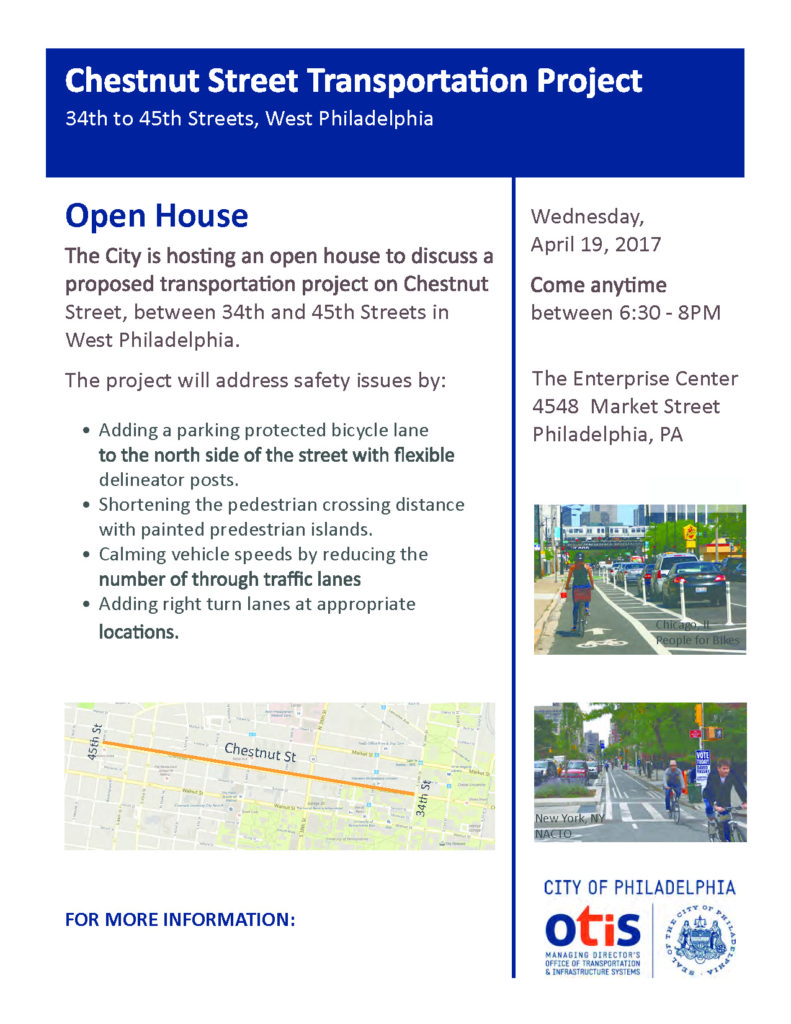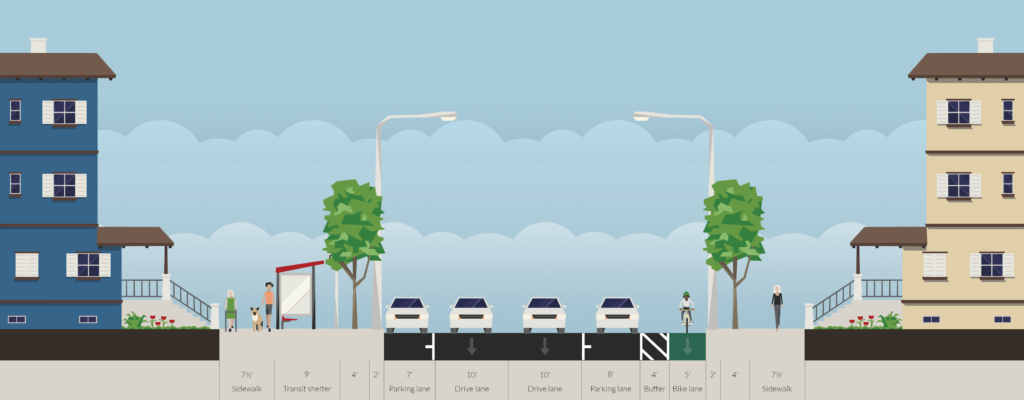 (for more information about the Open House, contact Jeannette Brugger, jeannette.brugger@phila.gov 215-686-5521)
(for more information about the Open House, contact Jeannette Brugger, jeannette.brugger@phila.gov 215-686-5521)
Six years after the advocacy for a parking-protected bike lane on West Chestnut Street began, the City of Philadelphia will hold an open house on its fifth project to calm traffic and to make a physically protected bikeway for bicyclists as part of Vision Zero and to implement its 2012 Pedestrian/Bicycle Master Plan. This project is one of many that will make up Mayor Kenney’s commitment to install 30 miles of protected bike lanes during his administration and for which the City won a Multimodal Fund grant from the Commonwealth. It will also be the City’s second “parked-car protected” bike lane (Ryan Avenue being the first).
The W. Chestnut Street protected bike lane—a safe lane for cyclists traveling from West Philadelphia to Center City—is planned to span from 34th Street to 45th Street in West Philadelphia, creating a safe place for cyclists, and a safer street for pedestrians and motor vehicle users, as well. The new configuration is also planned to be extended to 22nd Street in Center City as part of forthcoming PennDOT’s Chestnut Street Bridge project.

West Chestnut Protected Bike Lane
Philadelphia’s Bike/Ped Coordinator Jeannette Brugger announced the plans for West Chestnut Street’s bike lane at the Third Vision Zero Conference on March 1, 2017. Other improvements to this section of West Chestnut will include shortening pedestrian crossings, traffic calming and adding right turn lanes.
But before the fully funded project can be installed, the City is holding this public forum to discuss the lane—and we want you to be there.
Join us on April 19th to learn more about the W. Chestnut Street protected bike lane. While there, you will hear from city leaders and fellow citizens about the new bikeway.

I just hope this project is being done with an eye to proper traffic flow. Right turn lanes are probably a great idea, and so is a protected bike lane. But, has the proper study of traffic volumes been done to make sure a lane can be eliminated without choking off traffic flow at busy times of the day? Unless this street is a good deal more than adequate, problems with traffic flow will likely result. Eliminating a traffic lane on each of two one-way streets in Long Beach, California was a disaster for traffic flow. A much better alternative might well be slightly narrowing existing lanes and adding a bike lane, as was done on one of New York’s wider boulevards because engineers wanted to avoid frustrating motorists, which can result in aggressive driving. Agreed, some people speed and slightly narrower lanes can send the right signals and help that. Eliminating lanes can be counter-productive. The Vision Zero love for “traffic calming” ignores the statistics that show speed is nowhere near the most frequent cause of car-pedestrian crashes. Reducing traffic speeds is not the cure for every crash. If the effect is subtle, the result may be to slow the minority that is actually driving too fast. But unless very carefully done on a street that is actually under-utilized, the result could be the unnecessary inconvenience for many safe drivers.